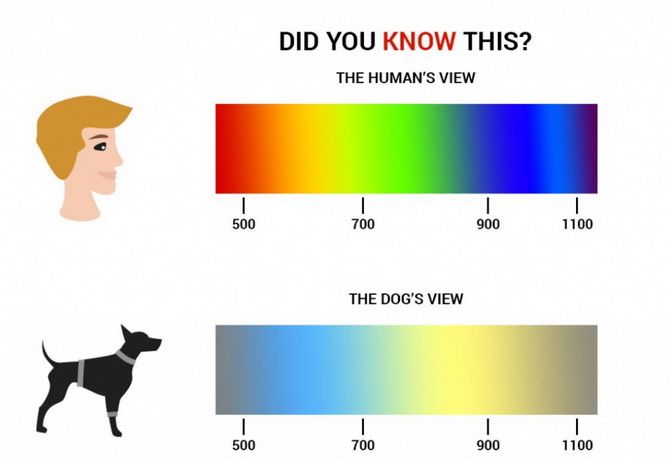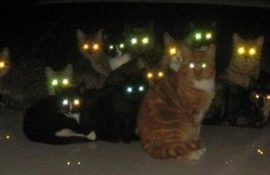The eyesight of dogs is not as sharp as that of humans. They see the surrounding objects blurry, which resembles the vision of a nearsighted person. The thing is that the resolution of the image that falls on the retina of the dog’s eye is less than that of a person. There are differences in color perception – a person has three types of color receptors, and a dog has two. Dogs see the world in shades of yellow and blue, not red and green.

If you saw a dog crossing the road at a green traffic light, then it simply copied the behavior of people.
Red is more likely to be gray in the perception of dogs, and green is more likely to be a faded yellow. To imagine a palette of doggy colors, try looking at the world at dusk.

But in the dark, dogs navigate much better than humans. There are more sensitive photoreceptors on their retina than on the human retina. These receptors are able to register even a single photon.

Another reason is the fundus of the eye, which in dogs, as well as in cats and other animals, is covered with tapetum. This is a layer of guanine crystals with an admixture of pigments, which works like a mirror and absorbs any light from the environment.
It is because of the tapetum that animals have eyes that sparkle in the dark and “shine” well in photographs.







Only registered users can leave comments